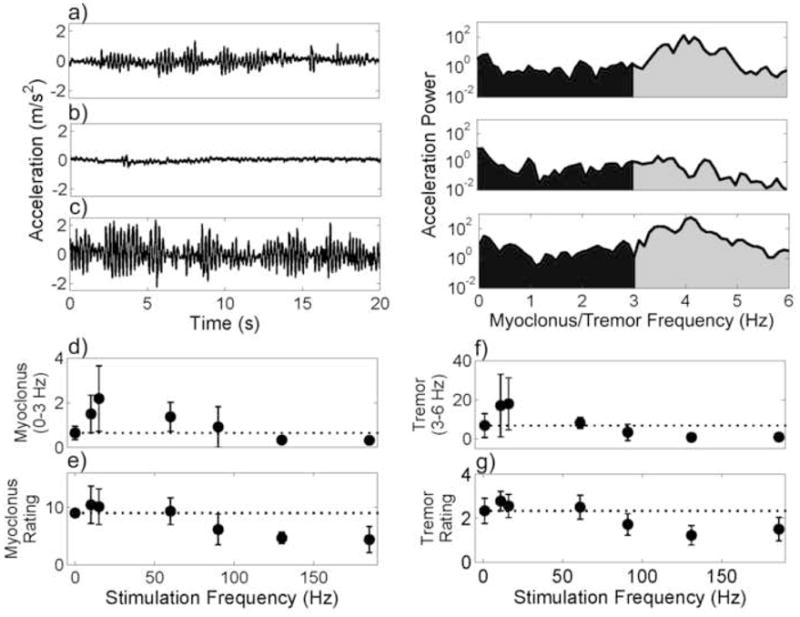Figure 1.

Effect of DBS amplitude and frequency on myoclonic jerking and tremor. a–c) Raw accelerometry (left) and power spectrums (right) for a) DBS OFF, b) 130 Hz, 3.0 V, 60 μs stimulation, and c) 15 Hz, 1.5 V, 60 μs stimulation. Myoclonus (d–e) and tremor (f–g) as a function of stimulation frequency, averaged across stimulation amplitudes (1.5, 3.0, and 4.5 V). Standard deviations are shown. d, f) Myoclonus and tremor were quantified by summing the acceleration power over 0–3 Hz (black) and 3–6 Hz (gray), respectively. e, g) Myoclonus and tremor were rated by a clinician blinded to the stimulation condition. The myoclonus rating (0–16) was the product of the rating for myoclonus amplitude (0–4) and frequency (0–4) [17]. Tremor was rated on a 0–4 scale.
